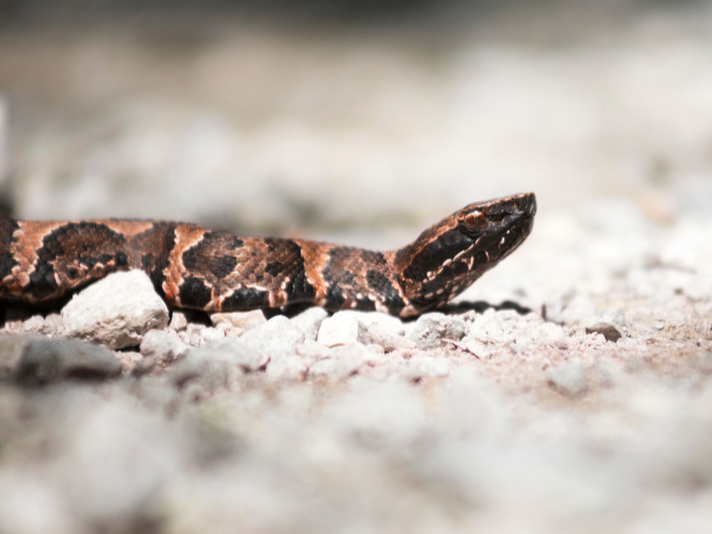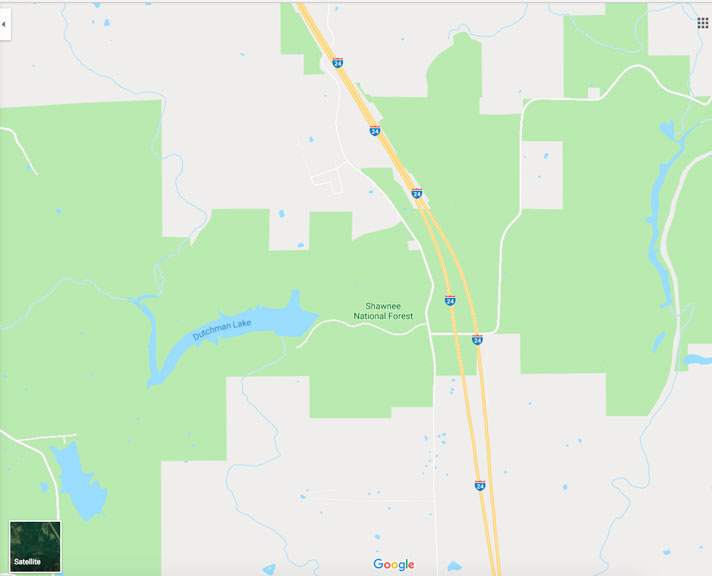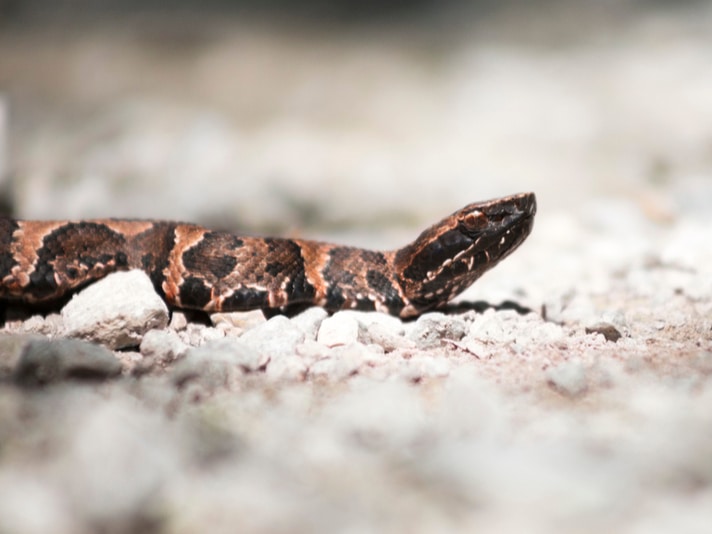Herping on the Snake Road in Shawnee National Forest is best done when the road is closed to vehicles, from September 1 to October 1.
If you are in Illinois, or will be visiting in the next month or so, and you want to go herping, consider "Snake Road" in the Shawnee National Forest.
The roads, LaRue Road and Forest Service Road No. 345, also known as Snake Road, were closed September 1 to vehicular traffic. The road is closed between mile post 3.0 and mile post 5.8. until October 30.

Cyrene Krey/Shutterstock
Juvenile cottonmouth on Snake Road in Illinois.
This is an opportune time to get out and observe the more than 35 snake species and various amphibians and other reptiles as they make their annual migration from their summer habitats to their winter habitats.

Herping on the Snake Road in Shawnee National Forest is best done when the road is closed to vehicles, from September 1 to October 1.
Called Snake Road by the locals, the road attracts reptile and amphibian lovers from throughout the United States to see all the animals on their annual migration.
9 Days On Shawnee National Forest's Snake Road Of Illinois
The forest service began restricting vehicles on the road more than 40 years ago, but back then hunters would come and shoot virtually every snake that they could as they made their annual trek. That is no longer the case, and the annual closures (the road is also closed in the spring for one month to allow the animals to move to their summer habitats), are a great time to see the variety of reptiles and amphibians that call the area home.


